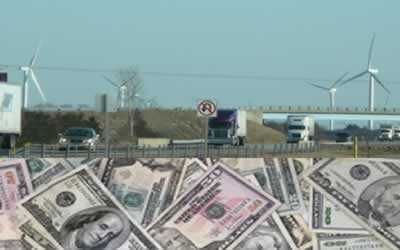A new article on South African infrastructure issues highlights an ongoing, and historic, problem with centralized, government-sponsored infrastructure spending: corruption.
 South African politician Helen Zille, in critical comments to the Independent Online, reviewed some of the specific problems her country faces in renovating and extending infrastructural systems. But her comments could be extended to many countries and the often problematic relationship between political organizations, with tax-funded budget authority, and the many vendors and contractors who are seeking contracts. This environment is a breeding ground for backdoor deals, ‘no bid’ contracts, collusion, and outright theft.
South African politician Helen Zille, in critical comments to the Independent Online, reviewed some of the specific problems her country faces in renovating and extending infrastructural systems. But her comments could be extended to many countries and the often problematic relationship between political organizations, with tax-funded budget authority, and the many vendors and contractors who are seeking contracts. This environment is a breeding ground for backdoor deals, ‘no bid’ contracts, collusion, and outright theft.
Infrastructure spending by government agencies often promotes corruption because contracts go to the most politically well-connected contractors. In closed, authoritarian countries this can be a direct “you scratch my back, I’ll scratch yours” sort of arrangement, while in more open, democratic countries the process is one focused on election campaign funding. In the United States this sort of indirect bribery is referred to as “pay to play.” By providing funding for projects the politician expects vendors, unions, or contractors to funnel some portion of the money back to supporting that politician or party.
There are recent and age-old examples of this sort of corruption in every part of the globe. It affects infrastructure projects directly by driving up costs, misdirecting revenue into less useful, sometimes completely useless, projects, and poisoning the political process. Reform efforts usually involve public scrutiny of bidding and contracting, open accounting practices, and a variety of information reforms like ‘sunshine laws’ and ‘ethics commissions.’ The effectiveness of these efforts obviously varies and the need for these efforts has never waned.
Susan Rose Ackerman covers these issues in her classic 1999 book Corruption and Government: Causes, Consequences, and Reform. She reviewed decades of research and offers examples where high levels of corruption limit investment and growth in any economy and lead to weak infrastructure systems, including ineffective government. Corruption creates huge economic inefficiencies and inequities that spread through other aspects of public and even private life.
Robert Rotberg picks up these ideas and expands on the issues of corrosive corruption in Corruption, Global Security, and World Order (2009). This is a collection of articles from around the world that examines many different, and depressing, examples of the impact of gaming the public funding system. The varied approaches to combating this problem are the most valuable part of these articles.
In the US this issue continues to eat at the fringes of massive expenditure plans. Last year the American Society of Civil Engineershas identified $2.2 trillion worth of repairs needed on bridges, roads, schools, and water and sewage systems. And that’s just the repair and maintenance, without additional construction or replacement of aging systems. With that much money on the line serious efforts must be put in place to make the funding process as clean as possible.

